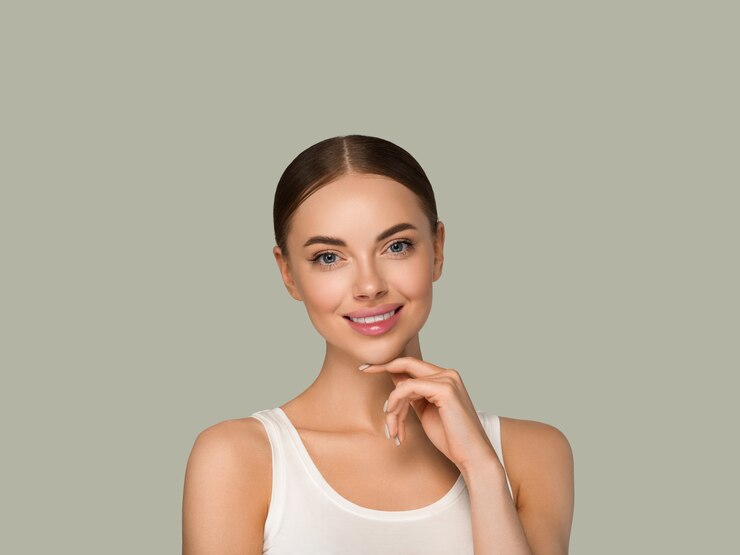Introduction
The diverse beauty of Asian women is celebrated worldwide, yet often misunderstood or overshadowed by Western beauty standards. Among the many features that contribute to this unique beauty is the curved jawline. For Asian women, the jawline represents both physical allure and cultural significance. In this blog post, we will explore the distinctive characteristics of the curved jaw, its cultural perceptions, and the genetic factors that influence its shape. Additionally, we’ll provide tips for maintaining jawline health and discuss cosmetic enhancements while celebrating natural beauty. Finally, we’ll encourage self-acceptance and empowerment, reminding every woman to love their distinctive features.
Understanding the Curved Jaw
A curved jawline is a prominent feature among many Asian women. It is characterized by a gentle contour that adds dimension and harmony to the face. Unlike a sharp angular jaw, the curved jaw softens facial features, creating a graceful appearance. Variations exist, ranging from subtle curves to more pronounced shapes. For some, the jawline may appear rounder, while for others, it might possess an elegant sweep. Understanding these variations helps appreciate the individuality inherent in each face.
The curved jaw is influenced by several factors, including bone structure, muscle tone, and fat distribution. Each of these elements plays a role in shaping the jawline, making it unique. While genetics are a primary determinant, environmental factors and lifestyle choices also contribute. Recognizing the complexity behind the curved jaw fosters a greater appreciation for the distinctive traits that make each person special.
For many Asian women, the jawline is not merely a physical feature but a symbol of cultural identity. In various Asian cultures, the curved jaw is often associated with femininity, elegance, and grace. By understanding its significance, individuals can better appreciate the historical and cultural value tied to their jawline, enhancing their sense of self-worth and identity.
Cultural Perceptions
Throughout history, beauty standards have evolved, influenced by cultural, societal, and historical contexts. In Asian cultures, perceptions of beauty are deeply rooted in traditions, art, and philosophy. The jawline, as a central facial feature, has been subject to diverse interpretations over time. While contemporary influences, such as Western media, have impacted beauty ideals, traditional values still hold strong in many communities.
Historically, a gentle, curved jawline was considered a hallmark of beauty and femininity in several Asian cultures. It was often portrayed in art and literature as a desirable trait, symbolizing purity, elegance, and harmony. This perception of beauty continues to resonate in modern society, where many Asian women continue to value their natural features, including the curved jaw.
In recent years, there has been a growing movement to redefine beauty standards, emphasizing diversity and inclusivity. This shift is encouraging individuals to celebrate their unique features and challenge conventional norms. For Asian women, this means acknowledging the beauty of the curved jaw and recognizing its significance as a representation of cultural heritage and personal identity.
The Genetics of Jawlines
Genetic factors play a crucial role in determining the shape and structure of the jawline. Specific genes influence bone development, muscle tone, and fat distribution, all of which contribute to the overall appearance of the jaw. Among different ethnic groups, variations in these genetic factors lead to diverse jawline shapes and characteristics.
In Asian populations, certain genetic markers are more prevalent, leading to the distinctive curved jawline commonly seen among Asian women. These genetic traits have been passed down through generations, contributing to the rich diversity within Asian communities. Understanding the genetic basis of jawline variation allows individuals to appreciate the natural beauty inherent in their unique features.
While genetics provide the foundation for jawline shape, environmental factors and lifestyle choices can also influence its development. Factors such as diet, physical activity, and skincare routines can impact muscle tone and skin elasticity, affecting the jawline’s appearance. Recognizing the interplay between genetics and lifestyle empowers individuals to take proactive steps towards maintaining a healthy and beautiful jawline.
Lifestyle and Jawline Health
Maintaining a healthy jawline involves a holistic approach that encompasses diet, exercise, and skincare. By adopting healthy habits, individuals can enhance their natural beauty and promote overall well-being. Here are some practical tips for cultivating a healthy jawline.
A well-balanced diet rich in essential nutrients supports bone health and muscle tone, which are crucial for a defined jawline. Incorporate foods high in calcium and vitamin D to strengthen bones, as well as lean proteins to support muscle development. Additionally, staying hydrated and consuming antioxidant-rich foods can improve skin elasticity, contributing to a youthful-looking jawline.
Regular physical activity can help tone the muscles around the jaw and neck, enhancing definition and contour. Incorporate facial exercises into your routine to target these areas specifically. Simple exercises, such as chin lifts and jaw clenches, can be performed daily to strengthen facial muscles and improve jawline appearance. Consistency is key to achieving desired results.
Skincare plays a significant role in maintaining healthy and vibrant skin around the jawline. Use moisturizers and serums that contain ingredients like hyaluronic acid and collagen-boosting peptides to promote elasticity and firmness. Additionally, protect your skin from sun damage by using sunscreen, as UV exposure can accelerate the loss of skin elasticity over time.

Cosmetic Enhancements and Natural Beauty
For those seeking to enhance the appearance of their jawline, cosmetic procedures offer a range of options. From non-invasive treatments like dermal fillers and Botox to surgical interventions such as jawline contouring, there are various methods available to achieve desired results. However, it’s important to carefully consider the potential risks and benefits before pursuing any cosmetic enhancements.
Dermal fillers can be used to add volume and definition to the jawline, creating a more sculpted appearance. This non-surgical option provides temporary results with minimal downtime, making it a popular choice for those looking to enhance their jawline without undergoing surgery. Similarly, Botox injections can relax muscles that contribute to a square jaw, resulting in a softer, curved appearance.
While cosmetic enhancements can provide aesthetic improvements, it’s essential to remember the value of natural beauty and self-acceptance. Every individual is unique, and the features that make you distinctive should be celebrated. By focusing on self-care and adopting a positive mindset, you can enhance your natural beauty and boost your confidence without relying solely on external alterations.
Empowerment and Self-Acceptance
Self-acceptance is a powerful tool for cultivating confidence and self-esteem. For Asian women, embracing their natural features, including the curved jaw, is an important step towards empowerment. By recognizing the beauty inherent in your individuality, you can challenge societal norms and redefine beauty on your own terms.
To foster self-acceptance, practice positive self-talk and gratitude for your unique attributes. Surround yourself with supportive individuals who uplift and encourage you to be your authentic self. Additionally, engage in activities that promote self-expression, such as art, writing, or fashion, allowing you to showcase your true identity.
Empowerment comes from within, and it involves taking ownership of your narrative and celebrating your unique qualities. By doing so, you not only inspire yourself but also encourage others to do the same. Remember, the beauty of the curved jaw lies not only in its physical appearance but also in the confidence and strength it represents.
Conclusion
Asian women with curved jawlines possess a unique beauty that transcends conventional standards. By understanding the diverse factors that contribute to jawline shape, celebrating cultural heritage, and promoting self-acceptance, individuals can appreciate the beauty inherent in their distinctive features. Whether through lifestyle choices, cosmetic enhancements, or simply embracing natural beauty, every woman has the power to feel confident and empowered.







































